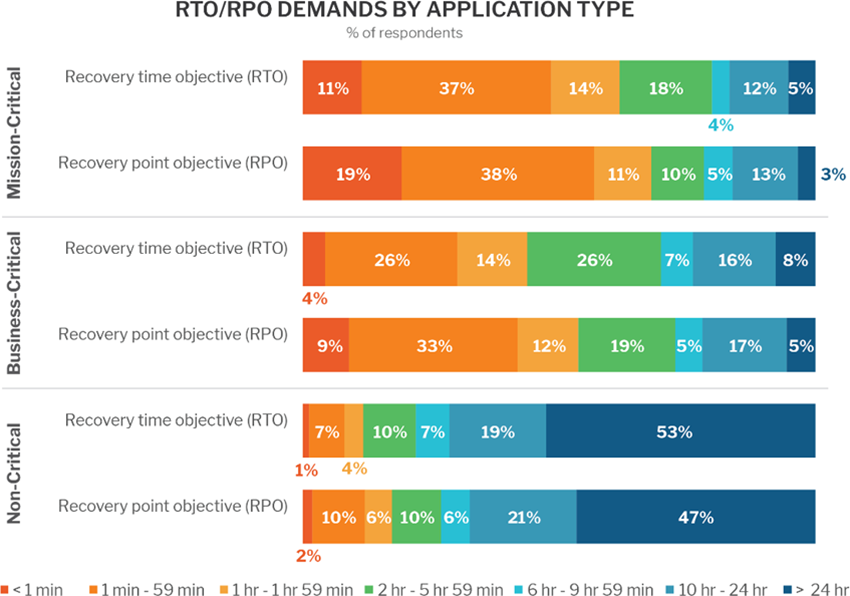
We’ve talked about the astronomical growth of data before, but not all data is created equal.
Organizations are unwavering in their demands when it comes to recovering workloads and data critical to their business and overall mission. This makes sense, given that the cost of downtime can be massive, and data loss and outages can make front page news.
On top of that, businesses are almost as intolerant of downtime when it comes to noncritical data: organizations we’ve surveyed have reported RTO (Recovery Time Objective) expectations of less than a day.
RTO and RPO
RTO and RPO (Recovery Point Objective) are both metrics used in disaster recovery planning. RTO is the metric specifying the amount of time that is permissible for a successful recovery operation – in other words, the amount of downtime that is acceptable for a given application or workload.
RPO measures the acceptable amount of data that can be lost as a result of an outage. Logically, RTOs and RPOs shift based on the criticality of the workload being recovered; the more critical the workload, the lower the tolerance for downtime.
In a recent 451 Alliance survey, close to half of Alliance members (48%) reported RTOs for mission-critical applications of less than an hour, with 57% reporting a similarly timed RPO for the same data.
As mentioned above, when shifting the focus to noncritical data and workloads, the RTO and RPO expectations shift from less than an hour to less than a day.

These high expectations combined with increasing volumes of data promise some interesting developments on the storage front.
Storage vendors will need to provide not just backup and recovery for data retention, but also broader data management to secure, protect, and make available the large data volumes that enterprises are leveraging to improve their businesses.

